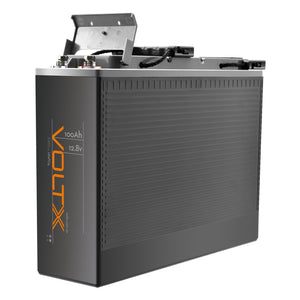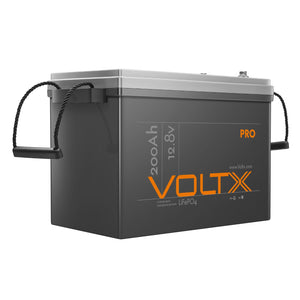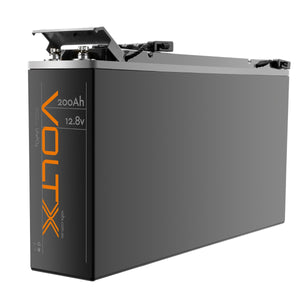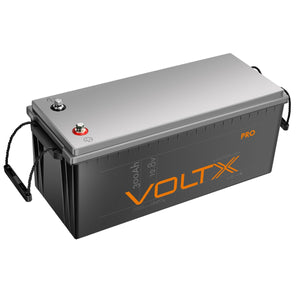What is BMS in a lithium battery? Considered as the brain behind a battery, a battery management system or simply BMS plays a crucial role in terms of a lithium battery's safety, performance, charge rates, and lifespan. The technology behind a BMS is dedicated to the maintenance of a battery pack, which is composed of battery cells electrically organised to deliver a specific range of voltage and current for a duration of time. Typically, a BMS takes care of battery monitoring, battery protection, and performance optimisation.
Battery management systems do not have a single, fixed standard. Most of the time, they are designed according to either the cost, structure, or size of the battery pack. It could also be based on the battery application which includes any safety, lifespan, or warranty concerns. However, although there are several design features for BMS, battery pack protection and capacity management are the two most important criteria and are always required in any system.
Additionally, BMS is among the reasons why LiFEPO4 batteries are considered the safest and best lithium battery in the market, whether used as a camping battery or caravan battery. LiFEPO4 may be internal or external, but here in Outbax, our LiFEPO4 batteries feature a built-in BMS, which significantly contributes to its overall performance, lifespan, and safety.
Why do I need a BMS for my lithium battery?
Voltage control: Charging with an appropriate lithium battery charger is not the sole way of maintaining your LiFEPO4 batteries. Lithium iron phosphate batteries or LiFEPO4 operate within a safe range of voltage. In cases where your battery goes beyond or under this range due to overcharging or undercharging, the BMS provides protection by limiting each cell and the battery itself to a minimum and maximum voltage. Both prolonged charging and undervoltage during battery discharge may cause permanent damage to your battery's performance, so having a BMS ensures that you get the most out of your lithium battery pack with minimal maintenance on your end.
Overload and short circuit protection: Batteries also have a maximum current to ensure safe operation. Plugging in a load higher than this may cause overheating, which is dangerous for both the user and the battery. While you can control the load you're placing on your battery, a BMS acts as an automatic safety feature against an overcurrent condition by disconnecting the battery from operation. For example, if you have a battery with a peak discharge current of 200A, the BMS will disconnect your battery from the circuit if the load reaches 250A. Short circuits are another hazard when it comes to battery operation. During these cases, the BMS works to quickly detect a short circuit condition before the battery overheats and causes even more damage by shutting down for a few seconds and resuming normal operations once the short circuit is removed.
Temperature control: While LiFEPO4 operate within a safe range of temperature, constant exposure to high operating and storage temperatures will cause the battery to degrade over time. The BMS helps prevent this with its integrated thermistors that actively track temperature during operation and disconnect the battery once it goes over the maximum required temperature.
Prevention of cell imbalance: In terms of charging, lead-acid battery cells charges almost at the same. This means that if one cell reaches a full charge faster than the other, the excess charge will go to the other cells as well, mostly to those that are in the lower end of the charge current. This is not the case with lithium-ion batteries though. When one cell charges faster than the others, the voltage keeps rising and may lead to electrode damage. If the entire charging process is stopped with only one fully charged cell, the battery will not operate at its peak capacity. This is where the advantage of BMS lies, as it makes sure each cell is safely and completely topped off after charging.
How to test BMS?
While you can test the BMS by connecting it physically to the battery, it can be dangerous especially if you want to test under extreme cell conditions involving temperature or load capacity. One way to effectively see if your BMS is working is through cell battery emulators. This is the method used during HiL or Hardware in the Loop testing. The HiL test presents a faster, safer way of testing batteries by mimicking the behaviour of lithium cells without actually using them.
More from Outbax
Outbax offers a range of LiFEPO4 batteries with built-in BMS, so you can check them out whether you’re planning a camping trip or simply want a backup source of power in your home. Now that you know how advantageous a battery management system is for lithium battery packs, you’re sure to love our lithium battery collection even more. Best of all, we have other portable power sources as well, including inverter generators, solar panels, and power stations. Every time you feel like going off-grid for a couple of days to enjoy the great outdoors, make sure you pay our website a visit for the best camping gear for sale.







